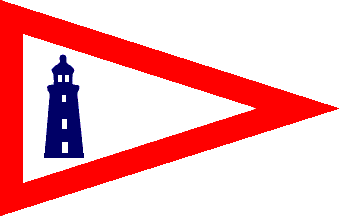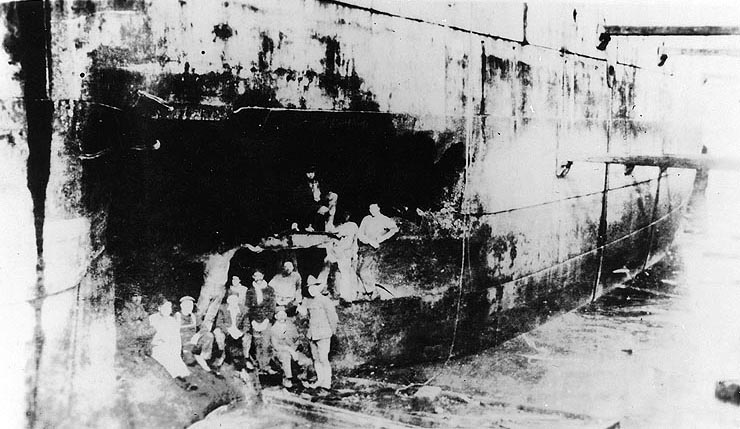|
SM U-90
SM ''U-90'' was a Type U-87 U-boat of the Imperial German Navy during World War I. Its commander Walter Remy made regular stops at remote island North Rona for provisions such as fresh mutton. On 15 May 1918, ''U-90'' shelled the Hirta wireless station in St Kilda, Scotland. On 31 May 1918, ''U-90'' torpedoed and sank , a former Hamburg America Line steamer that had been seized by the United States for troop transportation. From the U.S. Navy crew that abandoned the sinking vessel, ''U-90'' captured Lieutenant Edouard Izac, eventually taking him to Germany. Izac later escaped German captivity and reported to the US Navy about German submarine movements. ''U-90'' was surrendered to the Allies at Harwich on 20 November 1918 in accordance with the requirements of the Armistice with Germany, and later laid up at Pembroke. She was to be loaned to Belgium, and was en route there in tow from Pembroke when she foundered off the Isle of Wight on 29 November 1919. Design German Type U 87 ... [...More Info...] [...Related Items...] OR: [Wikipedia] [Google] [Baidu] |
German Empire
The German Empire (),Herbert Tuttle wrote in September 1881 that the term "Reich" does not literally connote an empire as has been commonly assumed by English-speaking people. The term literally denotes an empire – particularly a hereditary empire led by an emperor, although has been used in German to denote the Roman Empire because it had a weak hereditary tradition. In the case of the German Empire, the official name was , which is properly translated as "German Empire" because the official position of head of state in the constitution of the German Empire was officially a "presidency" of a confederation of German states led by the King of Prussia who would assume "the title of German Emperor" as referring to the German people, but was not emperor of Germany as in an emperor of a state. –The German Empire" ''Harper's New Monthly Magazine''. vol. 63, issue 376, pp. 591–603; here p. 593. also referred to as Imperial Germany, the Second Reich, as well as simply Germany, ... [...More Info...] [...Related Items...] OR: [Wikipedia] [Google] [Baidu] |
Harwich
Harwich is a town in Essex, England, and one of the Haven ports on the North Sea coast. It is in the Tendring district. Nearby places include Felixstowe to the north-east, Ipswich to the north-west, Colchester to the south-west and Clacton-on-Sea to the south. It is the northernmost coastal town in Essex. Its position on the estuaries of the Stour and Orwell rivers, with its usefulness to mariners as the only safe anchorage between the Thames and the Humber, led to a long period of civil and military maritime significance. The town became a naval base in 1657 and was heavily fortified, with Harwich Redoubt, Beacon Hill Battery, and Bath Side Battery. Harwich is the likely launch point of the ''Mayflower'', which carried English Puritans to North America, and is the presumed birthplace of ''Mayflower'' captain Christopher Jones. Harwich today is contiguous with Dovercourt and the two, along with Parkeston, are often referred to collectively as ''Harwich''. History The tow ... [...More Info...] [...Related Items...] OR: [Wikipedia] [Google] [Baidu] |
List Of Shipwrecks In February 1918
The list of shipwrecks in February 1918 includes ship A ship is a large watercraft that travels the world's oceans and other sufficiently deep waterways, carrying cargo or passengers, or in support of specialized missions, such as defense, research, and fishing. Ships are generally distinguished ...s sunk, foundered, grounded, or otherwise lost during February 1918. 1 February 2 February 3 February 4 February 5 February 6 February 7 February 8 February 9 February 10 February 11 February 12 February 13 February 14 February 15 February 16 February 17 February 18 February 19 February 20 February 21 February 22 February 23 February 24 February 25 February 26 February 27 February 28 February ... [...More Info...] [...Related Items...] OR: [Wikipedia] [Google] [Baidu] |
List Of Shipwrecks In January 1918
The list of shipwrecks in January 1918 includes ship A ship is a large watercraft that travels the world's oceans and other sufficiently deep waterways, carrying cargo or passengers, or in support of specialized missions, such as defense, research, and fishing. Ships are generally distinguished ...s sunk, foundered, grounded, or otherwise lost during January 1918. 1 January 2 January 3 January 4 January 5 January 6 January 7 January 8 January 9 January 10 January 11 January 12 January 13 January 14 January 15 January 16 January 17 January 18 January 19 January 20 January 21 January 22 January 23 January 24 January 25 January 26 January 27 January 28 January 29 January 3 ... [...More Info...] [...Related Items...] OR: [Wikipedia] [Google] [Baidu] |
List Of Shipwrecks In November 1917
The list of shipwrecks in November 1917 includes ship A ship is a large watercraft that travels the world's oceans and other sufficiently deep waterways, carrying cargo or passengers, or in support of specialized missions, such as defense, research, and fishing. Ships are generally distinguished ...s sunk, foundered, grounded, or otherwise lost during November 1917. 1 November 2 November 3 November 4 November 5 November 6 November 7 November 8 November 9 November 10 November 11 November 12 November 13 November 14 November 15 November 16 November 17 November 18 November 19 November 20 November 21 November 22 November 23 November 24 November 25 November 26 November 27 November 28 November 29 November ... [...More Info...] [...Related Items...] OR: [Wikipedia] [Google] [Baidu] |
List Of Shipwrecks In October 1917
The list of shipwrecks in October 1917 includes ship A ship is a large watercraft that travels the world's oceans and other sufficiently deep waterways, carrying cargo or passengers, or in support of specialized missions, such as defense, research, and fishing. Ships are generally distinguished ...s sunk, foundered, grounded, or otherwise lost during October 1917. 1 October 2 October 3 October 4 October 5 October 6 October 7 October 8 October 9 October 10 October 11 October 12 October 13 October 14 October 15 October 16 October 17 October 18 October 19 October 20 October 21 October 22 October 23 October 24 October 25 October 26 October 27 October ... [...More Info...] [...Related Items...] OR: [Wikipedia] [Google] [Baidu] |
List Of Shipwrecks In September 1917
The list of shipwrecks in September 1917 includes ship A ship is a large watercraft that travels the world's oceans and other sufficiently deep waterways, carrying cargo or passengers, or in support of specialized missions, such as defense, research, and fishing. Ships are generally distinguished ...s sunk, foundered, grounded, or otherwise lost during September 1917. 1 September 2 September 3 September 4 September 5 September 6 September 7 September 8 September 9 September 10 September 11 September 12 September 13 September 14 September 15 September 16 September 17 September 18 September 19 September 20 September 21 September 22 September 23 September 24 September 25 September ... [...More Info...] [...Related Items...] OR: [Wikipedia] [Google] [Baidu] |
Displacement (ship)
The displacement or displacement tonnage of a ship is its weight. As the term indicates, it is measured indirectly, using Archimedes' principle, by first calculating the volume of water displaced by the ship, then converting that value into weight. Traditionally, various measurement rules have been in use, giving various measures in long tons. Today, tonnes are more commonly used. Ship displacement varies by a vessel's degree of load, from its empty weight as designed (known as "lightweight tonnage") to its maximum load. Numerous specific terms are used to describe varying levels of load and trim, detailed below. Ship displacement should not be confused with measurements of volume or capacity typically used for commercial vessels and measured by tonnage: net tonnage and gross tonnage. Calculation The process of determining a vessel's displacement begins with measuring its draft.George, 2005. p.5. This is accomplished by means of its "draft marks" (or "load lines"). A mer ... [...More Info...] [...Related Items...] OR: [Wikipedia] [Google] [Baidu] |
Draught (ship)
The draft or draught of a ship's hull is the vertical distance between the waterline and the bottom of the hull (keel). The draught of the vessel is the maximum depth of any part of the vessel, including appendages such as rudders, propellers and drop keels if deployed. Draft determines the minimum depth of water a ship or boat can safely navigate. The related term air draft is the maximum height of any part of the vessel above the water. The more heavily a vessel is loaded, the deeper it sinks into the water, and the greater its draft. After construction, the shipyard creates a table showing how much water the vessel displaces based on its draft and the density of the water (salt or fresh). The draft can also be used to determine the weight of cargo on board by calculating the total displacement of water, accounting for the content of the ship's bunkers, and using Archimedes' principle. The closely related term "trim" is defined as the difference between the forward and aft ... [...More Info...] [...Related Items...] OR: [Wikipedia] [Google] [Baidu] |
Beam (nautical)
The beam of a ship is its width at its widest point. The maximum beam (BMAX) is the distance between planes passing through the outer extremities of the ship, beam of the hull (BH) only includes permanently fixed parts of the hull, and beam at waterline (BWL) is the maximum width where the hull intersects the surface of the water. Generally speaking, the wider the beam of a ship (or boat), the more initial stability it has, at the expense of secondary stability in the event of a capsize, where more energy is required to right the vessel from its inverted position. A ship that heels on her ''beam ends'' has her deck beams nearly vertical. Typical values Typical length-to-beam ratios ( aspect ratios) for small sailboats are from 2:1 (dinghies to trailerable sailboats around ) to 5:1 (racing sailboats over ). Large ships have widely varying beam ratios, some as large as 20:1. Rowing shells designed for flatwater racing may have length to beam ratios as high as 30:1, while a cor ... [...More Info...] [...Related Items...] OR: [Wikipedia] [Google] [Baidu] |





.jpg)
